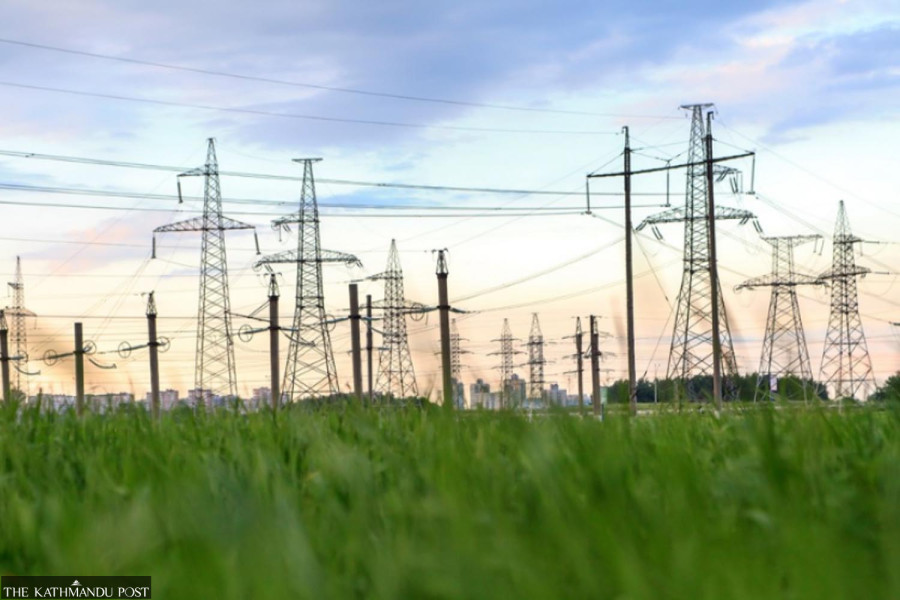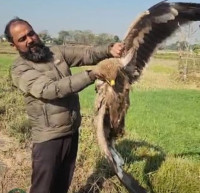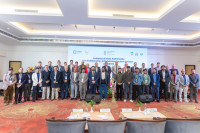National
NEA may build part of MCC-funded transmission line
Nepal Electricity Authority is concerned about a potential delay in completing the project, which is to be constructed under the MCC compact.
Prithvi Man Shrestha
The Nepal Electricity Authority is likely to take over the task of constructing the Nepal section of the 400kV New Butwal-Gorakhpur Cross Border Transmission Line from the Millennium Challenge Corporation with the latter agreeing to it in principle, officials said.
The 18km section of the transmission line is supposed to be constructed under the MCC compact programme along with other several high capacity power lines.
Concerned by the potential delay in completing the project on time while constructing it under the MCC compact, the state-owned power utility had written to the Millennium Challenge Account-Nepal (MCA-Nepal) in early August to drop the 18-km long section of the project from its plan and let the NEA undertake the construction. The MCA-Nepal is a special purpose vehicle established to implement the projects under the MCC compact in the country.
MCC is an aid agency of the US government which has pledged $500 million grant assistance to Nepal, the largest single package grant till date, to construct high capacity transmission lines and improve road infrastructure.
The Finance Ministry, which had signed the bilateral agreement on MCC cooperation, had sought the opinion of the MCC regarding the matter. “We have got a response from the MCC, which is positive to the NEA’s proposal,” said Ishwori Prasad Aryal, chief of International Economic Cooperation Coordination Division at the Finance Ministry, without elaborating on the details of the response. “But there has been no concrete decision on the matter as discussions are still ongoing.”
As the project is being implemented as per the bilateral agreement between the Nepal government and the US, it is necessary to take approval from MCC as well, according to the officials.
A senior official of the MCA-Nepal also corroborated Aryal’s version to the Post.
“The MCC is okay with the proposal, if the NEA does it,” Khadga Bahadur Bisht, executive director of MCA-Nepal. “But there are certain procedures that need to be followed to de-scope the project from the MCC’s purview on which discussions are undergoing.”
According to Bisht, there has been no concrete decision regarding allowing the NEA to construct the Nepal section of the New Butwal-Gorakhpur Transmission Line.
Under the MCC compact, a 315km double circuit 400kV transmission line will be constructed. Besides the New Butwal-India Border (18km) section, four other segments of power lines will be built—New Butwal-New Damauli (90km), New Damauli-Ratmate (90km), Ratmate-New Hetauda (58km), and Ratmate-Lapsephedi (59km).
The NEA wants the Nepal section of the cross-border power line to be completed simultaneously with the Indian side, which is supposed to be completed in the next two years.
It wants the Nepal section to be completed, as soon as possible, in order to export the bulk of the new power production to India. The country would not be able to export power to its southern neighbour without a new cross-border transmission line.
Currently, the Dhalkebar-Muzaffarpur Transmission line is the only high-capacity cross-border line which can transmit around 1,000MW of electricity.
“Nepal also will have to pay for booking of the cross-border transmission line on the Indian side without having the power transmitted on it,” said Teknath Tiwari, chief of Extensive Transmission Line Projects (400kV) of the NEA.
The Power Grid Corporation of India and the NEA have established a joint venture partner company in India to construct the power line on the Indian territory and the new company has already issued a tender to hire a contractor. “The evaluation process of the bidders is undergoing currently,” said Tiwari.
But the MCA-Nepal is yet to issue a call for tender for the transmission line construction. Bisht said the MCA- Nepal was in the final process of issuing tenders for the transmission line projects to hire the contractors.
The NEA is concerned whether the contractor would prioritise the New Butwal-Gorakhpur cross-border transmission line after getting the contract. “We are concerned that the contractor of the MCA-Nepal may not mobilise the human resources adequately and on time for the project and if that happens the project could be delayed,” said Tiwari.
The NEA officials said they can invest both time and resources for the project, if allowed to implement the project. The transmission line project will help Nepal control power spillage by allowing exports in big amounts to India.
Nepal is expected to increase its power production substantially over the next few years, with the domestic demand not growing on par with the production.
According to the NEA, the total installed capacity of power projects currently operating in the country totals over 2,200MW.
In an article in the Post in May, Prabal Adhikari, power trade director at the NEA wrote: “The installed generation capacity to be added to Nepal’s system is estimated to be 705.4MW for fiscal 2022-23, 706.8MW for fiscal 2023-24, 551.1MW for fiscal 2024-25, 787.2MW for fiscal 2025-26, and 976.7MW for fiscal 2026-27.”
Contingent upon more power being added to the power system, the power demand will, however, remain less than the generated power. The projected peak power demand by fiscal 2022-23 stands at 2031MW, according to the NEA. By fiscal 2025-26, Nepal will have 2,456MW of maximum surplus power and 14,022 million units of annual surplus energy available for export, according to Adhikari.
In order to export such a large volume of power, the country needs additional cross-border transmission lines to ensure that the available power does not go to waste. “We understand the urgency of the NEA and the MCC has been positive to the proposal,” said Bisht.
According to Tiwari, besides taking the responsibility for constructing the Nepal section of the New Butwal-Gorakhpur transmission line, there has been discussion about whether the MCC would fund land acquisition, while the NEA would be engaged in constructing the project.
However, Bisht said that the MCC could bear certain social costs such as livelihood restoration programmes for the households to be affected by the transmission line projects, provided the NEA implements the transmission line project.
“The NEA will bear the cost of land acquisition and construction,” said Bisht. “Any savings from not investing in the project may be utilised in improving some other transmission infrastructure of the NEA, though there is little chance of savings since the costs have already risen from the time the last estimates for the proposed transmission line projects were prepared in 2017.”




 8.12°C Kathmandu
8.12°C Kathmandu















